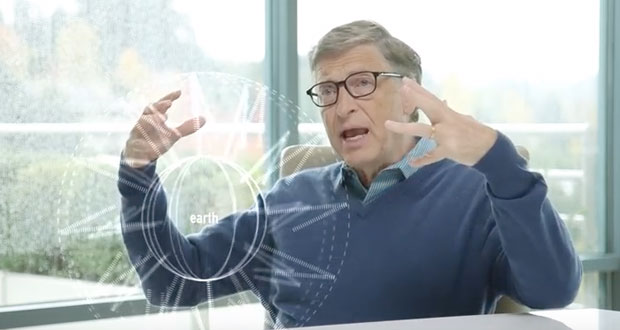One year after a powerhouse group of technology executives and venture capital icons met to form the Breakthrough Energy Coalition, the group, led by Microsoft founder Bill Gates, has launched a US$1 billion investment fund to support clean energy startups around the world.
The Breakthrough Energy Fund, chaired by Gates, is designed to jumpstart an entire new generation of entrepreneurs developing radical new approaches to providing reliable and low-cost energy, with zero carbon emissions as the end goal.
Institutional partners, including the University of California, will help generate research ideas. Strategic partners, including Southern Co. and others, will help the group with regulatory issues, and figure out which companies have the most promise.
In addition to Gates, co-chair of the Bill and Melinda Gates Foundation, the Breakthrough Energy Coalition’s board members include John Arnold, co-chair of the Laura and John Arnold Foundation; John Doerr, chair of Kleiner, Perkins, Caufield & Byers; and Vinod Khosla, founder of Khosla Ventures.
Star Power
Other leading members include Jack Ma, executive chairman of Alibaba Group; Mukesh Ambani, chairman and managing director of Reliance Industries; Hasso Plattner, cofounder of SAP; Jeff Bezos, founder and CEO of Amazon; and Reid Hoffman, founder of LinkedIn.
Former New York Mayor Michael Bloomberg recently joined the investor group, bringing the membership to 21, Gates said.
“Breakthrough technologies … have the potential to be one of the best investment opportunities of the 21st century,” Doerr said earlier this week, in a conference call with reporters.
The fund will invest in a wide variety of companies — storage, transportation, agricultural, electrical generation and industrial, among others. The fund will offer a range of financing, from seed capital to early stage investment and capitalization.
The fund will take advantage of a lot of lessons learned about financing clean energy companies, and apply those lessons to the new venture, Doerr said.
The fund will emphasize taking a “long, patient view” toward investment, in order to give companies enough time to properly develop, Khosla said during the conference call.
The fund will be able to handle seven-, eight- and nine-figure investments, Arnold added, and it will focus on revolutionary versus evolutionary investments — that is, those designed to push aggressively toward significant emission reductions.
“While there might be long-term business gains, I personally believe that this is part of [Gates’] philanthropic work to improve overall human conditions, particularly for the next generation,” observed Farah Saeed, principal consultant at Frost & Sullivan.
“Also, there is the attraction of using technology to resolve existing issues around improving affordability and vast availability of clean energy,” she told TechNewsWorld.
DoE Support
U.S. Department of Energy Secretary Ernest Moniz hailed the launch of the new fund as a breakthrough that will help push the U.S. into greater standing in the clean energy field, and he warned against the dangers of rolling back this progress.
“Because of the United States’ longstanding commitment to technology innovation, we have a head start on developing next generation clean-energy technologies,” Moniz said. “However, if the United States chooses to back away from a redoubled commitment to innovation, it will be American entrepreneurs, manufacturers and workers who will be put at competitive disadvantage in developing breakthrough technologies and creating jobs.”























































To avoid human extermination in a decade, we may have to replace 80% of fossil fuels within 5 years. The need for emergency action has largely been ignored. The Gates program seems unaware.
Revolutionary 24/7 solar powered engines, scalable to 100,000 Hp, are headed for pilot plant production in 2017. A converted Ford engine running without fuel proved the concept.
Since there is no combustion, these engines can be made of polymers using 3-D printing.
Development and pilot plant production need to be accomplished on a 24/7 basis. To learn more see the website: aesopinstitute.org